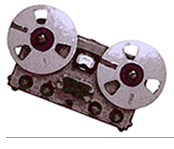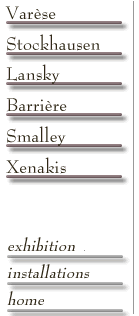


|
After completing Night Traffic, Lansky wrote the following: "The sounds of traffic are probably among the most explicitly unmusical noises we can imagine -- music to no one's ears. Even so, there is a kind of randomness, violence, and rhythmic intensity (and great Doppler shifts!) which draw upon and excite all sorts of musical perceptions. Night Traffic is a musical filter on the noises of a local four-lane highway recorded one night in 1990. The imposition of slowly shifting harmonies and timbres creates large-scale musical shapes which attempt to impose some order and sense on this chaos, while explicating whatever implicit music there is in the movements of these large violent machines. I got the idea for this piece from a former student, Eric Forte, whom I taught when I visited the California Institute of the Arts in 1987. Eric did a wonderful piece called 5: a quiet and simple processing of U.S. 5, which runs past Cal Arts. I decided to see what my more high-strung sensibilities would come up with if I dealt with this sort of material, and Night Traffic is the result." |
This is a music meant to be taken in slowly and savored. As traffic noise is manipulated into a harmonic field and imparted with pitch salience, the "noise" becomes a carrier of musical information: Lansky begins "playing" the traffic as a musical instrument. Lansky often remarks that computer music -- if it is to survive and be accepted as music -- must be remarkable on purely musical, not technical, terms. That is, the fact that a computer was used to create it must become irrelevant as a part of its aesthetic context if integration into the larger musical landscape will ever fully occur. Only then can we listen to it as music, not as computer music. He has surely succeeded. |